
The evolution of video game consoles: A journey through generations
Let’s embark on a fascinating journey through generations, exploring the evolution of video game consoles from the early pioneers to the cutting-edge powerhouses of today. We will delve into the historical milestones and innovative features that have shaped the gaming landscape over the years.
The global video game industry has reached staggering heights, with revenues surpassing 184 billion dollars annually as of 2022. This immense growth can be attributed in large part to the success and popularity of video game consoles, which have become a staple in households around the world.
So fasten your seatbelts and get ready to travel back in time as we explore the remarkable story of video game consoles, from the first pioneers that laid the foundation to the current generation of gaming powerhouses.
First generation: The pioneers (1972-1977)
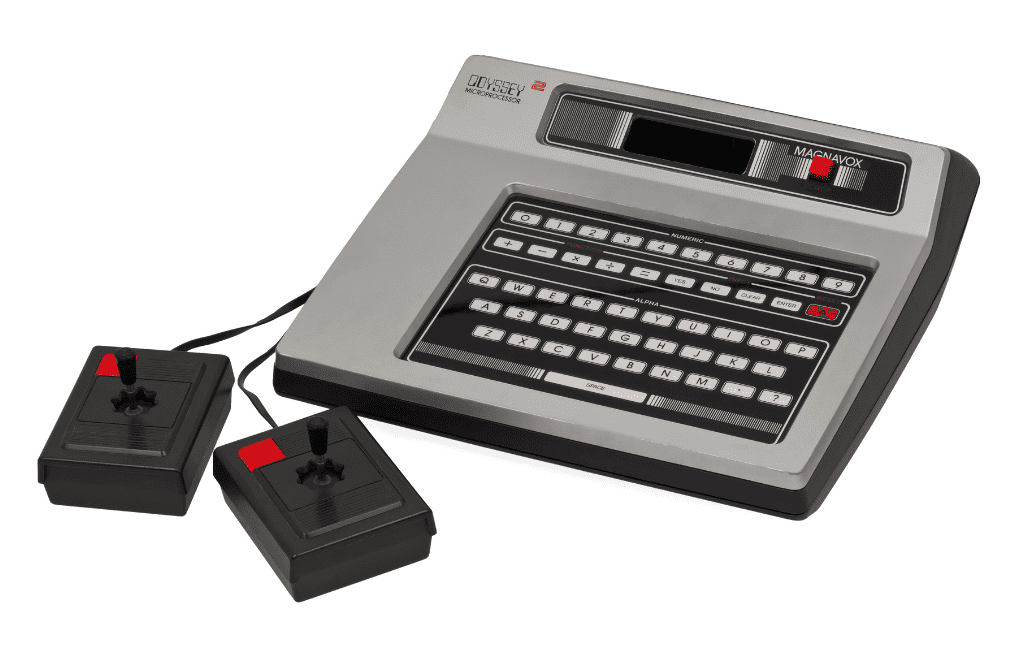
First-generation consoles marked the beginning of the gaming revolution. These pioneering systems, such as the Magnavox Odyssey and Atari 2600, introduced basic graphics and simple gameplay. While limited in capabilities compared to modern consoles, they laid the foundation for the future of gaming and ignited a passion for interactive entertainment.
1972 – 1977
1966: The invention of video games has come very far since the first video game console was produced in the 1970s. In 1966, Ralph H. Baer came up with the idea of playing easy, spot-based games on a television screen, which was the inspiration for the Magnavox Odyssey in 1972. Video game invention began in 1967 with a prototype called the Brown Box, some of the games were Ping-pong, checkers, sports games, target shooting with a light gun, and a golf putting game that needed a special attachment.
1972: The Brown Box console, also known as the Magnavox Odyssey, was a brown-coloured console that was priced at $99.99 USD and came with several games that could be played using items such as dice, boards, cards, and plastic TV screen overlays. Here are some of the games that could be played by two participants or one person on the console: Tennis, Hockey, Ping Pong, Ski, Roulette, Cat and Mouse, Football, Submarine, Haunted House, Wipeout, and Invasion.
Atari Inc. launched the video game Atari Pong in 1972, which was one of the popular video games made available for home consoles with simple music effects and a monochrome CRT monitor that was used to display the game. Players in the two-dimensional sports game Pong use paddles to strike a ball back and forth across a virtual net, simulating the game of table tennis.
The first-generation consoles laid the foundation for the industry’s expansion in the 1980s.
Who is the father of the video game console?
The father of video games is often credited to Ralph H. Baer. Baer, an engineer and inventor, is renowned for creating the Magnavox Odyssey, which was released in 1972 and is considered the world’s first home video game console.
Baer’s pioneering work laid the foundation for the modern video game industry, revolutionizing the way people interacted with electronic entertainment and paving the way for the incredible advancements we see in video game consoles today.
Second generation: The rise of home gaming (1978-1983)
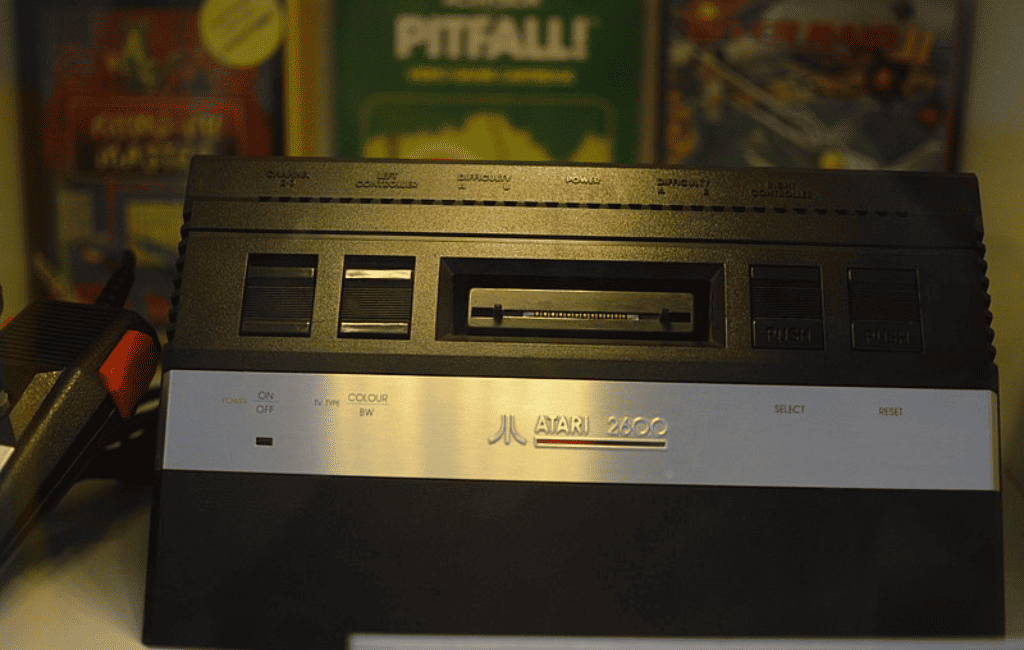
Second-generation consoles marked a significant advancement in video gaming, introducing more powerful hardware and enhanced graphics capabilities. Popular consoles of this era, such as the Atari 2600 and the Magnavox Odyssey 2, paved the way for iconic games and laid the foundation for the future of gaming.
1976 – 1982
1976: The original Telstar console was one of the first video game consoles released to use a microprocessor. It had three built-in games: Tennis, Hockey, and Handball. In the same year, Teslar released another game, Jai Alai of the Telstar Alpha.
The Fairchild Channel F, which debuted in 1976, was also the first game console to use cartridges that could be switched out to play various games. In addition, it had a colour graphics display, which was an improvement over the previous consoles’ monochrome ones.
1977 – Atari Inc. first launched the Atari 2600 in North America in September 1977 under the name Atari VCS (Video Computer System). Removable game cartridges were used to make it possible for users to quickly swap between games, making it the first home video game console. Over 30 million console units—featuring several well-known games like Space Invaders, Pac-Man, and Pitfall—were distributed during its production.
The Tank, Jet Fighter, Torpedo, and Anti-Aircraft video games on the Telstar Combat system from Coleco were among its four military-themed titles. Four retro arcade-style games, including Space War, Racing, Baseball, and Pinball, were featured in the Telstar Arcade, which was also launched in 1977.
In that same year, the RCA Corporation released the RCA Studio II, which made history as the first to use programmable ROM cartridges in the video game industry. But it had its graphic and sound capabilities restricted. The feature allowed users to enjoy a wider range of games beyond the built-in ones that were common at the time. Joseph Weisbecker of the Fairchild Channel F designed Studio II with its game library comprising just nine titles, such as Tennis, Blackjack, and Space War, all characterized by straightforward gameplay and basic graphics.
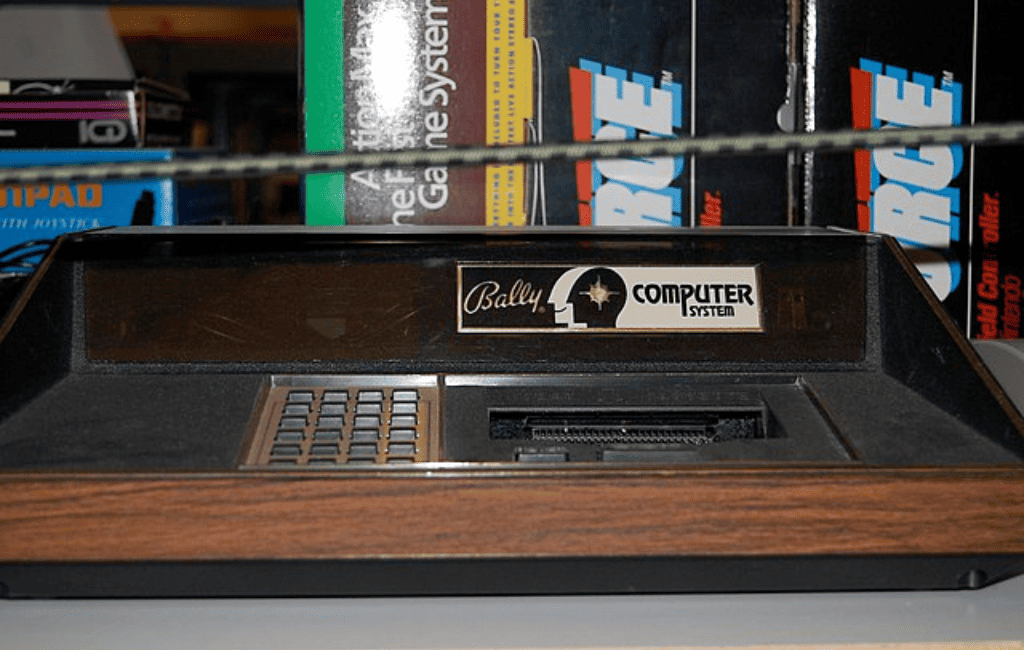
Similarly, the Bally Astrocade was introduced by Bally Manufacturing Corporation in 1977 and was renowned for its advanced hardware capabilities in the console market. The Astrocade was distinctive because it used a one-of-a-kind cartridge format, enabling it to store larger game data and support more complicated games than its contemporaries. The console had over 30 games in its collection, including Gun Fight, Space Fortress, and Galactic Invasion, which were known for showcasing the system’s superior graphics and sound capabilities.
1978: The Telstar Colormatic, released in 1978, was the first Telstar console to support colour graphics. It had six built-in games: Tennis, Hockey, Handball, Jai Alai, Light Tennis, and Hockey Practice. The Telstar Ranger, a hybrid video game console and electronic shooting range, was finally launched by Coleco in 1978.
1979: The Mattel Electronics company introduced the Intellivision home video game console in 1979 as a competitor to the Atari 2600. Renowned for its advanced graphics and sound capabilities, the console gained popularity in the early 1980s and offered a diverse range of games, including sports, action, strategy, and educational titles. Setting it apart from its rivals, the Intellivision employed a keypad controller that allowed for more complex gameplay and boasted a voice synthesis module that added voice commands and sound effects to games.
1982: In August 1982, Coleco Industries released the ColecoVision, which was intended to rival other consoles of its time, including the Atari 2600 and Intellivision. Its advanced graphics and sound capabilities were highly regarded, and the console’s impressive game library included classic arcade titles like Ms. Pac-Man, Zaxxon, and Donkey Kong.
Third generation: The 8-bit era (1983-1995)
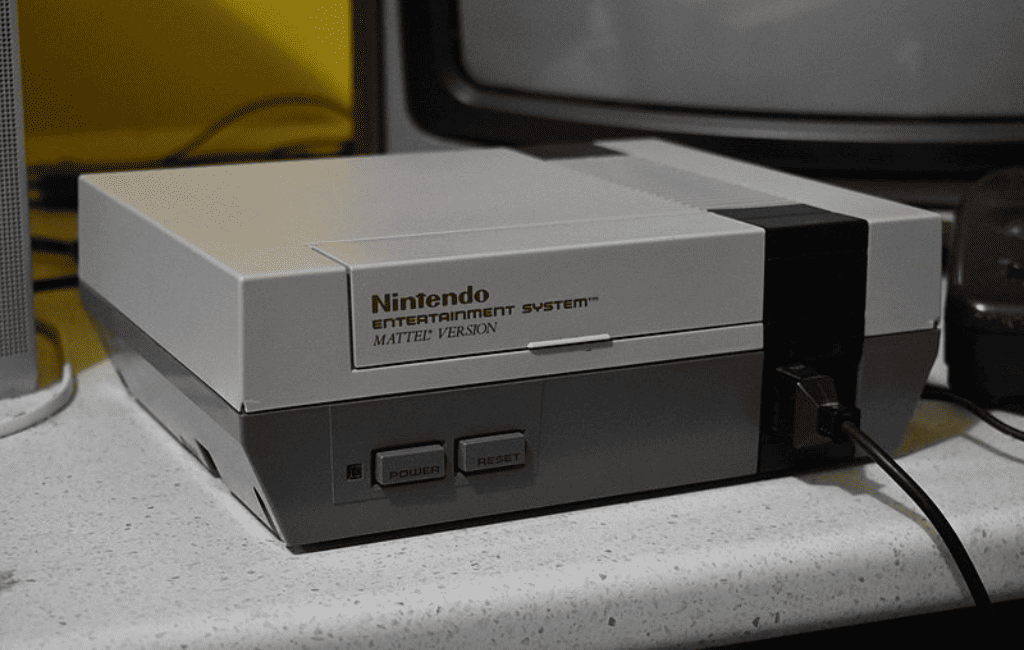
The third generation of video game consoles, also known as the 8-bit generation, brought significant advancements in gaming technology. Consoles like the Nintendo Entertainment System (NES) and Sega Master System popularized home gaming with their improved graphics, sound capabilities, and a wide range of iconic games. This era laid the foundation for many gaming franchises and set the stage for the future of console gaming.
1983 – 1986
1985: Nintendo released the Nintendo Entertainment System (NES) in North America, which was the first in the Nintendo Entertainment System series to offer a complete entertainment experience by enabling players to enjoy video games, audio cartridges, and VHS tapes. Its unique game cartridge system allowed players to easily plug in and play various games, including Super Mario Bros, The Legend of Zelda, and Mega Man, among the most popular NES games.
Sega released the Sega Master System, which was designed with a cartridge slot for games. The card slot for data storage had an 8-bit CPU, a video display processor, a sound processor, and a controller equipped with a directional pad, two action buttons, and a start button. Popular games include Sonic the Hedgehog, Alex Kidd in Miracle World, and Phantasy Star.
The Video Game Crash of 1983:
1983 saw a significant downturn in the North American video game industry. It was characterized by a saturation of low-quality games, an oversupply of game consoles in the gaming market, and consumer dissatisfaction. The crash resulted in a decline in sales, the bankruptcy of several game companies, and a loss of confidence in the industry.
The upside? It paved the way for a revitalized gaming industry with the introduction of stricter quality control measures, leading to a resurgence in the evolution of game consoles in the subsequent years.
1986: Atari Corporation introduced the Atari 7800 video game system in 1986, which could play a sizable selection of pre-existing titles because it was backward compatible with the Atari 2600. In addition, it had better graphics and sound features than the Atari 5200, its predecessor. A few well-known Atari 7800 titles are Galaga, Pole Position II, Ms. Pac-Man, and Centipede.
Fourth generation: The 16-bit battle (1987-1996)

The fourth generation of consoles revolutionized gaming with enhanced graphics and sound capabilities. Consoles like the Super Nintendo Entertainment System (SNES) and Sega Genesis offered a vast library of immersive games, introducing iconic franchises and delivering memorable gaming experiences. This era witnessed fierce competition between Sega and Nintendo, driving innovation and pushing the boundaries of gaming technology.
1987– 1992
1987: NEC launched the TurboGrafx-16 video game console in 1987 in Japan and in 1989 in North America. There were two of TurboGrafx-16’s distinctive hardware characteristics, and they were the HuC6280 CPU and a proprietary video chipset. It also had a TurboGrafx-CD CD-ROM add-on that enabled more game storage and better audio, with the most well-known TurboGrafx-16 titles being R-Type, Blazing Lazers, and Bonk’s Adventure.
1988: Sega released the Sega Genesis video game system in 1989 in North America after releasing it in Japan in 1988 under the name Sega Mega Drive. The Genesis was renowned for its cutting-edge hardware components, including its Motorola 68000 Processor, a unique video chipset that permitted quick scrolling and intricate graphics, and a well-liked add-on called the Sega CD that enabled more game storage and better audio. Sega Genesis, NBA Jam, and Sonic the Hedgehog are some of the most well-liked titles.
The Gaming War of the ’80s and ’90s
The 1980s marked a turning point in the history of video games, as industry giants like Nintendo and Sega rose to prominence through innovation and captivating classics like “Pacman” and “Mario Bros.” Surpassing competitors such as Atari, Mattel, and Coleco, Nintendo and Sega engaged in a fierce rivalry throughout the ’90s, shaping the gaming landscape.
While Atari made its final notable contributions, Sega embraced the shift from cartridges to compact discs, and Sony entered the market with the groundbreaking PlayStation console, ushering in a new era of gaming and intensifying the competition among these industry leaders.
1990: SNK created the Neo Geo, a video game device and arcade system (now known as SNK Playmore). Due to its strong graphics and audio features, the Neo Geo hardware was well-liked for arcade games and had a custom CPU and video chipset, which were used in the system to enable fluid scrolling and finely detailed visuals. Additionally, it featured a memory card system that let users save their accomplishments in arcade games which included Metal Slug, Samurai Shodown, and King of Fighters.
In that same year, Nintendo created the SNES (Super Nintendo Entertainment System), which replaced the initial Nintendo Entertainment System (NES), offered better visuals, audio, and gameplay features, debuted the now-iconic SNES gamepad, which had a D-pad, two shoulder buttons, and four face buttons. Super Mario World, The Legend of Zelda: A Link to the Past, Super Metroid, and Final Fantasy VI are just a few of the beloved classic titles that were released.
Fifth generation: The leap to 3D (1993-2006)
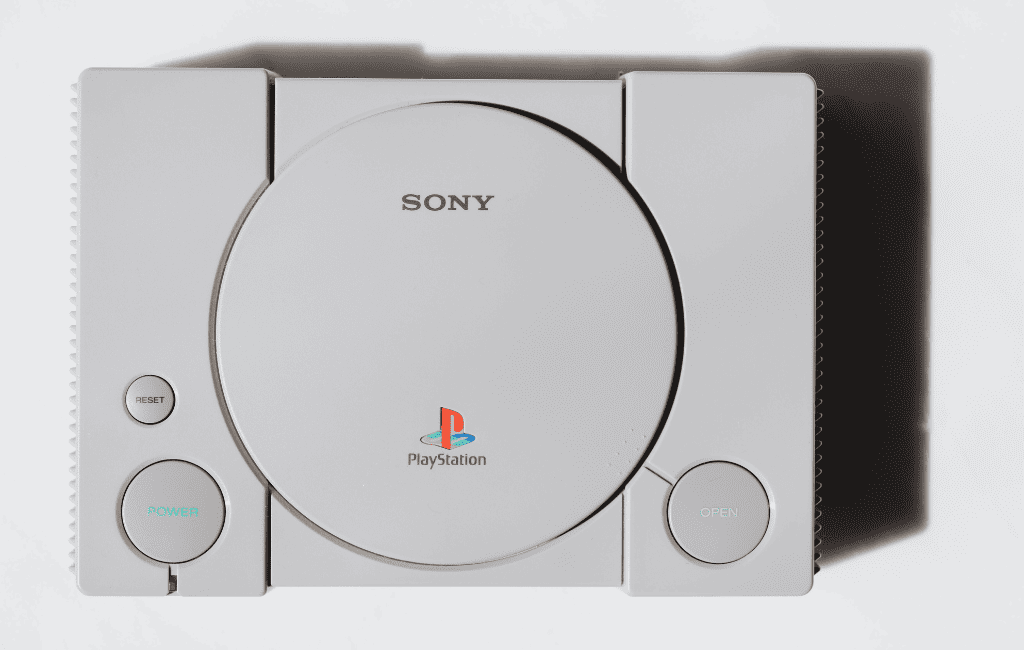
Consoles like the Sony PlayStation and the Sega Saturn introduced 3D graphics, CD-based media, and immersive gameplay experiences. This era marked a transition from 2D to 3D gaming and set the stage for future innovations in console gaming.
1993– 1997
1994: Sega introduced the Sega Saturn in Japan in 1994 and in North America and Europe in 1995. The Saturn has two 32-bit processors, eight processors for graphics and music, a built-in CD-ROM drive that enabled the use of larger-capacity games and video applications, and was built to be a powerful gaming system.
The Sony PlayStation, also referred to as PS1 or PSX, was manufactured by Sony Computer Entertainment. It was first made available in 1994 in Japan and then in 1995 in North America, Europe, and other areas. It allowed for larger and more complex games than previous gaming systems because it stored games on CD-ROMs rather than cartridges. It was one of the first consoles to have a dedicated graphics processing unit, and it also debuted 3D graphics (GPU) with over 100 million units sold globally. Several sequels to the PlayStation were also released as a result of its popularity, including the PlayStation 2, PlayStation 3, and PlayStation 4.
1996: Nintendo created and manufactured the video game console known as the Nintendo 64 (N64), which debuted in Japan and North America in 1996, followed by Europe and Oceania in 1997. The N64 was Nintendo’s third home system, and it replaced the Super Nintendo Entertainment System (SNES) with several novel elements, such as 3D graphics, analog control sticks, and four controller ports. The Legend of Zelda: Ocarina of Time, Super Mario 64, and GoldenEye 007 are some of the most well-known N64 titles.
Sixth generation: The era of connectivity (1998-2013)
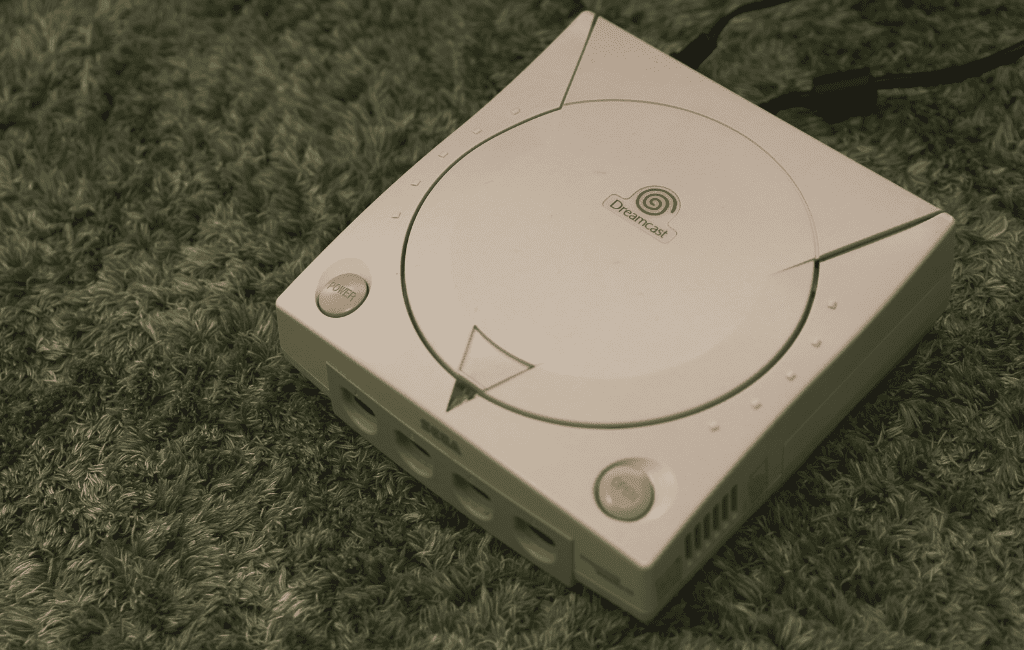
Introduced in the late 1990s and early 2000s, consoles like the PlayStation 2, Xbox, and GameCube offered improved graphics, increased processing power, and online connectivity. This era in the history of gaming witnessed the continuous transition to 3D gaming, the introduction of DVD technology, and a diverse range of immersive and innovative games that captivated players worldwide.
1998– 2004
1998: In Japan on November 27, 1998, and in North America on September 9, 1999, Sega launched the Sega Dreamcast, the first gaming system to support online gaming thanks to its integrated modem, and also had a special visual memory unit (VMU) that could be used as both a memory card and a miniature handheld console. Games like Sonic Adventure, Shenmue, and Jet Set Radio were among the console’s many ground-breaking titles.
2000: Sony introduced the Sony PlayStation 2, also known as the PS2, on March 4, 2000, in Japan and on October 26, 2000, in North America. It was the PlayStation’s replacement and the second system of the sixth console generation. It was distinguished by its potent technology, ability to play PlayStation games, and sizable game library. It also featured many highly regarded and financially rewarding games like Grand Theft Auto III, Metal Gear Solid 2: Sons of Liberty, and Kingdom Hearts.
Side note:
The PlayStation 2 is the best-selling video game console of all time, with over 155 million units shipped globally. The PlayStation 3 ultimately replaced it in 2006; however, the PS2 is still widely used by gamers, and many of its titles are still played and enjoyed even though they are more than 20 years old.
2001: On September 14, 2001, Nintendo launched the GameCube in Japan, and on November 18, 2001, it was made available in North America. It was the third console of the sixth generation of video game consoles, after the Xbox and PlayStation 2, and the fourth console produced by Nintendo. The GameCube was noteworthy for its small size, the fact that mini-DVDs served as its main form of storage, and its special controller, which included a large button for the main action and a central analog stick. Titles produced that were commercially successful included The Legend of Zelda: The Wind Waker, Metroid Prime, and Super Smash Bros.
Microsoft makes the video game trademark and gaming system Xbox. The Xbox 360, Xbox One, and Xbox Series X|S were all introduced after the initial Xbox in 2001. In addition to Xbox hardware, Microsoft has created a sizable collection of exclusive video games, many of which are well-known series like Halo, Forza, and Gears of War that are enabled for cloud gaming or streaming games on various devices. Users of Xbox Live, Microsoft’s online gaming service, can access Netflix, Hulu, and Amazon Prime Video and play games with people from around the globe.
Seventh generation: HD and motion gaming (2005-2017)
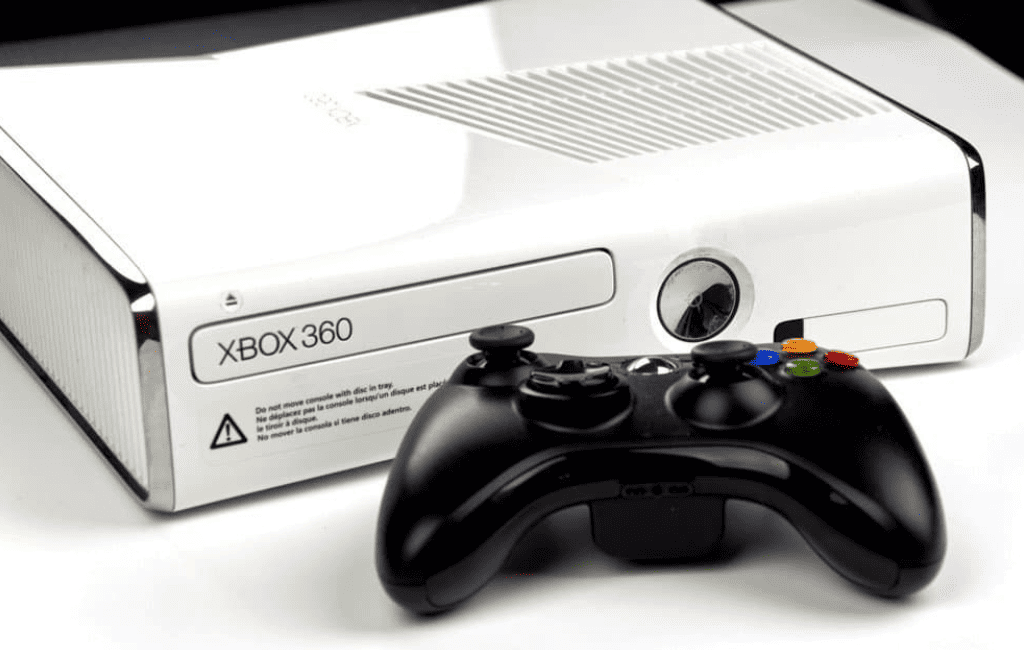
The PlayStation 3 (2006), Xbox 360 (2005), and Wii (2006) offered immersive experiences, including online multiplayer, digital distribution, and innovative motion-based gameplay. Games like “The Last of Us” (2013), “Mass Effect” (200
2005– 2017
2005: Xbox 360 was the Xbox’s successor with a strong processor and graphics capabilities allowing it to run sophisticated games and show high-definition graphics. It also debuted the Xbox Live online gaming platform, which lets users engage in online competition and communication.
2006: Sony created and launched the PlayStation 3 (PS3) video game console in 2006. It had high-definition graphics, and Blu-ray videos could be played on the PS3 thanks to its cutting-edge hardware, which included a powerful processor and a Blu-ray disc drive. The PlayStation Network also introduced an online gaming platform that lets users interact and compete with one another over the internet.
Released in 2006, the Nintendo Wii succeeded the Nintendo GameCube with notable features like the Wii Remote, an innovative controller designed to be held in one hand that enabled players to interact with games using motion controls. The console also included a sensor bar to detect the controller’s movements and was recognized for its family-friendly and easy-to-use games, such as the bundled Wii Sports, which allowed players to simulate various sports using the Wii Remote’s motion controls.
Eighth generation: The era of next-gen power (2012-present)
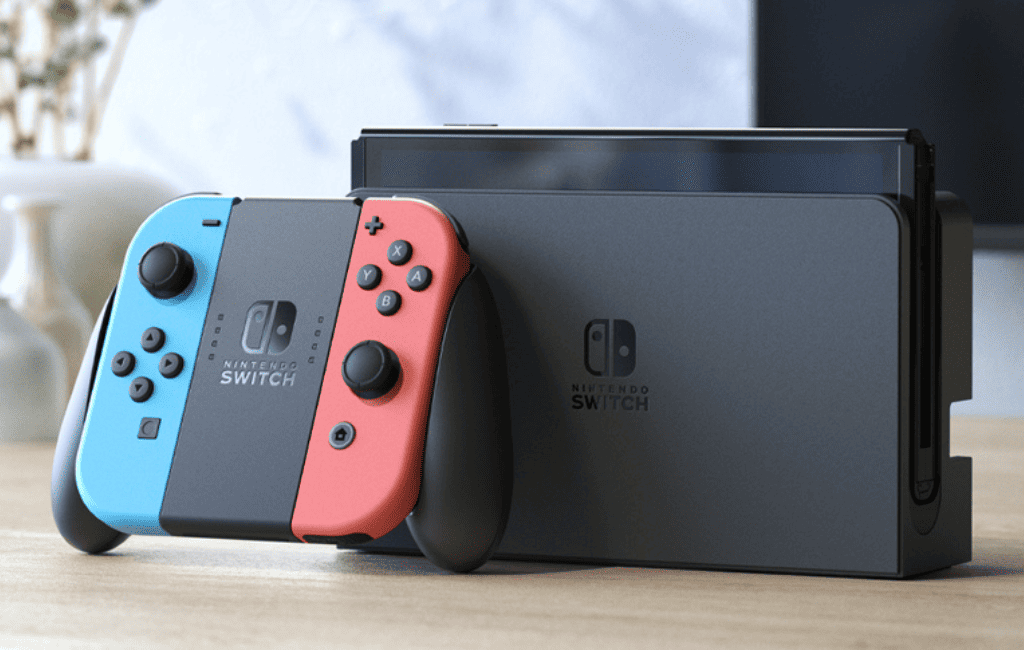
The eighth generation of gaming consoles spanned from 2013 to the present day, bringing forth a new era of technological advancements and immersive gaming experiences. Let’s explore the key highlights of this generation year by year:
2012– present
2013: Sony’s PlayStation 4 captured the gaming world’s attention with its powerful hardware, stunning graphics, and an extensive library of exclusive titles. Games like “God of War” and “Uncharted 4” showcased the console’s capabilities, while features like remote play and social integration enhanced the gaming experience.
That year, Microsoft’s Xbox One entered the scene with a focus on multimedia integration and innovative features. With titles like “Halo 5: Guardians” and “Gears of War 4,” the console offered thrilling gaming experiences. Additionally, backward compatibility allowed players to enjoy their favorite Xbox 360 games on the new system.
Midway through the eighth generation, Sony and Microsoft introduced upgraded versions of their consoles. The PlayStation 4 Pro (2016) and Xbox One X (2017) offered enhanced performance, 4K gaming capabilities, and improved visuals, providing a premium gaming experience for enthusiasts.
2017: Nintendo’s hybrid console, the Nintendo Switch, revolutionized gaming with its portable-to-home console design. Released in 2017, its innovative Joy-Con controllers and unique gameplay experiences, such as “The Legend of Zelda: Breath of the Wild” and “Super Mario Odyssey,” captivated players of all ages.
Throughout the eighth generation, online gaming and digital distribution became increasingly popular. Players could connect with friends, join multiplayer matches, and access a vast library of digital games through online services like PlayStation Network, Xbox Live, and Nintendo eShop. The generation also saw the rise of virtual reality gaming. PlayStation VR for PS4 and other VR devices provided immersive and interactive experiences, transporting players into virtual worlds and opening up new possibilities for gaming.
Ninth generation: The future unveiled (2020-present)

The ninth-generation consoles bring significant improvements compared to their predecessors. These consoles feature faster computation and graphics processors, enabling real-time ray tracing graphics and support for resolutions up to 4K and, in some cases, 8K. With rendering speeds targeting 60 frames per second or higher.
2020– present
2020 – Microsoft released its latest gaming console, the Xbox Series X/S, with two models made available; the Xbox Series X, which is the higher-end option, and the Xbox Series S, which is smaller and more affordable. The Xbox Series X is a powerful console designed to provide gamers with high-quality experiences through its custom AMD Zen 2 processor and RDNA 2 graphics architecture. Both models support advanced graphics features such as 4K and 120fps gaming, ray tracing, and variable rate shading.
That same year, Sony released the PlayStation 5 (PS5), offering numerous new features and improvements, including a custom SSD that enhances loading times, upgraded graphics processing, and the new DualSense controller, featuring haptic feedback and adaptive triggers that provide a more immersive gaming experience. The PS5 has an expanding game library that includes titles like Demon’s Souls, Spider-Man: Miles Morales, and Returnal and backward compatibility with most PS4 games.
Future of video game consoles
Attempting to predict the future of games is like trying to teach a goldfish how to play chess—a delightful exercise in futility. But hey, who doesn’t love a good challenge? Here are the major shifts in dynamics that we can expect to influence the future of video game consoles.
Subscription-based consoles
The future of consoles may see a shift from physical hardware to subscription-based services. With the rise of cloud gaming and the availability of game streaming platforms, the need for dedicated home consoles may diminish.
Companies like Sony and Microsoft have already started embracing this trend by making their exclusive games available on other platforms and offering subscription services like PlayStation Plus and Xbox Game Pass.
As technology advances, consoles could become something you subscribe to on various devices, eliminating the need for expensive hardware and offering a more flexible and accessible gaming experience.
Portable and VR gaming
Mobile gaming has already made significant strides, but the introduction of powerful mobile systems threatens the dominance of home consoles. Devices like the Nintendo Switch and emerging mobile gaming brands offer impressive hardware at affordable prices, blurring the line between console and handheld gaming.
Additionally, portable virtual reality (VR) holds great potential for immersive gaming experiences on the go. VR headsets can create virtual worlds, eliminating the need for large screens and allowing players to enjoy games in simulated environments. The integration of VR and the advent of the metaverse promise exciting possibilities for the future of gaming.
Smartphone gaming
Smartphone gaming has experienced a remarkable surge in popularity, surpassing the console division and earning a significant share of the gaming industry’s revenue. The accessibility and ease of smartphone games have contributed to their widespread adoption, with a much larger user base compared to consoles. Interestingly, major players like Sony, Nintendo, Sega, Atari, Bandai, and Square Enix have also ventured into the smartphone gaming arena, expanding their reach.
While some may argue that smartphone gaming could potentially replace the need for dedicated consoles, it is unlikely to happen anytime soon. The demand for consoles, especially the anticipated PS5, remains strong among Sony fans. Additionally, virtual reality (VR) gaming, which offers immersive experiences, is gaining traction and finds its best execution on consoles and PCs. However, the future of console gaming may eventually undergo changes influenced by the success of smartphone gaming.
Generative AI in gaming
Thanks to procedural content generation, designers can now let AI take the reins in generating game assets like forests, rocks, and entire levels. This technique has become a staple in the industry, offering players a fresh and unpredictable experience with each playthrough. In fact, games like No Man’s Sky have pushed the boundaries of procedural generation to the extreme, creating entire open-world environments without any predefined blueprint, and we expect to see more of this in the future.
Even more impressive, the advent of neural networks has allowed game makers to personalize game levels based on individual player preferences. By collecting player data and feeding it into computer systems, tailored levels can be generated, taking into account factors like jump frequency, enemy difficulty, and item accessibility. The marriage of AI and game design has truly revolutionized the way games are created, captivating players with ever-evolving worlds that cater to their unique tastes.
Conclusion
The video game console history has been a remarkable journey filled with technological advancements, immersive experiences, and fierce competition among industry giants.
Each generation has brought new features, improved graphics, and innovative gameplay experiences that have captivated players and kept them coming back for more. From the rise of online gaming and digital distribution to the integration of virtual reality, the gaming landscape has been transformed by these advancements.
As we look to the future, we know, undoubtedly, that the video game console industry will continue to evolve. The next generation of consoles promises even more immersive experiences, stunning graphics, and groundbreaking technologies. The world of video game consoles will always provide a source of joy, excitement, and endless entertainment.


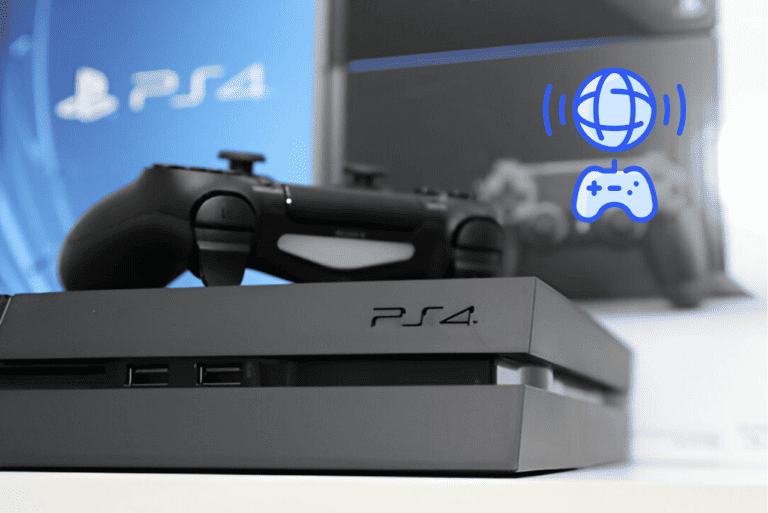
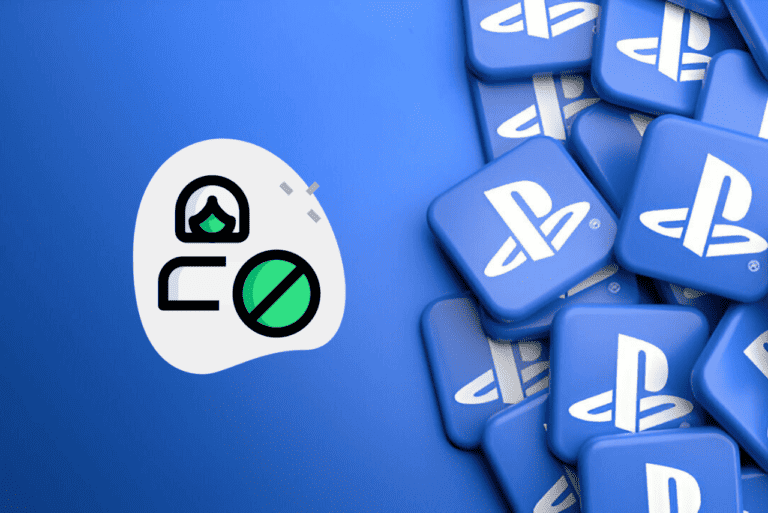
Leave a Comment